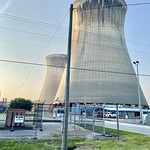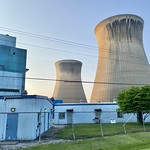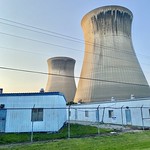OIL GAS AND INDUSTRIAL HISTORICAL ASSOCIATION INC
PARKERSBURG, WV

The Oil, Gas and Industrial Historical Association Inc is a non-profit organization located in Parkersburg, West Virginia. Established in 1979, the organization is dedicated to the collection, preservation and interpretation of historical artifacts related to the oil, gas and industrial industries of West Virginia.
The association serves as an educational resource and facilitates the research and preservation of material related to the oil, gas and industrial industries. Its collection includes hundreds of photographs, documents, objects, oral histories and other artifacts. The association works to identify and protect important sites, structures and objects related to the industry and its history.
The association holds an annual Oil, Gas and Industrial Historical Symposium which provides a forum for researchers, scholars and others interested in the history of the industry. Additionally, the association produces a quarterly journal called West Virginia Petroleum Notes and publishes a variety of books and brochures related to the industries and their history.
The Oil, Gas and Industrial Historical Association Inc works to preserve the past and to share the knowledge with the public. Through its exhibitions, programs, publications and research the association hopes to create greater awareness of the history and culture of the industry and its impact on West Virginia.
OIL GAS AND INDUSTRIAL HISTORICAL ASSOCIATION INC is a History Museum in PARKERSBURG WV. US MID #8405400178
The museum is classed as HST (History Museums). It comes under American Alliance of Museums (AAM) region: Southeastern (Alabama, Arkansas, Florida, Georgia, Kentucky, Louisiana, Mississippi, North Carolina, South Carolina, Tennessee, Virginia, West Virginia). Total revenue from most recent IRS 990 Form: $ 111,585 from tax period 201106 (YYYYMM).
Contact OIL GAS AND INDUSTRIAL HISTORICAL ASSOCIATION INC
OIL GAS AND INDUSTRIAL HISTORICAL ASSOCIATION INC
PO BOX 1685
PARKERSBURG
WV
26102-1685
Disclaimer: please note this database is maintained by volunteers and whilst we endeavour to do our best, we cannot guarantee the accuracy of the listing.
If you notice any errors or omissions in the listing, please let us know in the comments section below.
Find more PARKERSBURG WV Museums
What 3 Words
///land.newly.record. Near Parkersburg, West Virginia
Map of OIL GAS AND INDUSTRIAL HISTORICAL ASSOCIATION INC
OIL GAS AND INDUSTRIAL HISTORICAL ASSOCIATION INC Information
| MID # | 8405400178 |
| Name | OIL GAS AND INDUSTRIAL HISTORICAL ASSOCIATION INC |
| Alternate Name | |
| Classification | History Museums, , Southeastern |
| Federal Employer Identification Number (EIN) | 550698886 |
| NTEECC | A54 |
| Tax period of the latest return filed (YYYYMM) | 201106 |
| INCOME | 111,585 |
| REVENUE | 111,585 |
| LAT/LONG | 39.277745, -81.5228186 |
| CODES | FIPS State Code: 54 FIPS County Code: 107 US Census Tract: 011000 US Census Block: 3045 |











